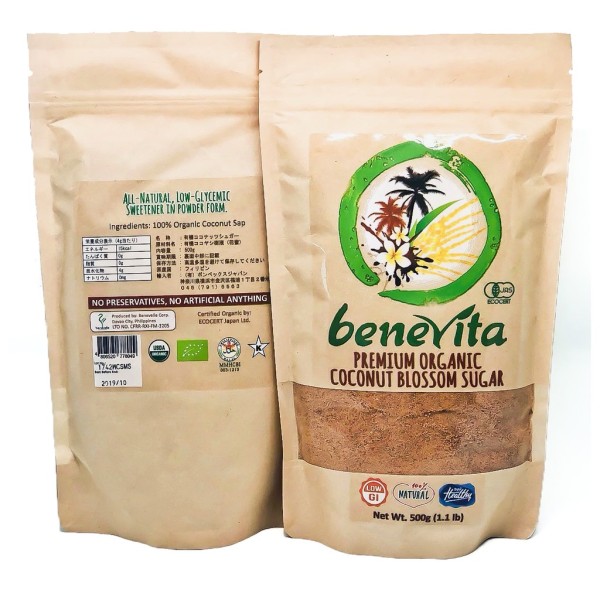Description
Coconut sugar, sometimes called coconut sap sugar or coco sugar, is a sweetener made from the sap of the palm tree’s flowers. It is natural and unrefined, making it a viable substitute for synthetic sugars.
The Philippine Coconut Authority (PCA) describes coco sugar as light yellow, cream, or dark brown in color, with a sweet scent and pleasant nutty aroma. It features a slight caramel aftertaste and can be used like any conventional sweetener with a 1:1 ratio. The PCA suggests coco sugar as a sweetener for beverages such as coffee, chocolate, and tea. It can also be used in cooking, baking, and breadmaking.
Coco sugar has increased in popularity and marketability because of its claimed health benefits, including having higher mineral content than muscovado sugar, according to the PCA. Among these minerals are potassium, magnesium, nitrogen, zinc, and iron. Coco sugar is also hailed to have a low glycemic index (GI), especially when compared to regular table sugar, which has a GI of 65. According to a study by the Food and Nutrition Research Institute of the Department of Science and Technology of the Philippines, the GI of coco sugar ranges from 35 to 42. This is beneficial for managing diabetes, lowering cholesterol levels, maintaining good weight, and avoiding obesity.
This sweetener is also gentler to the environment, having undergone a more sustainable production process. The Food and Agriculture Organization even recognizes coconut sugar as the single most sustainable sweetener in the world. Harvesting can be done multiple times in a day as the sap is replenished just hours after being tapped. No chemical fertilizers are also required in its production, while natural processes of heat evaporation are used to convert the sap into granules.














